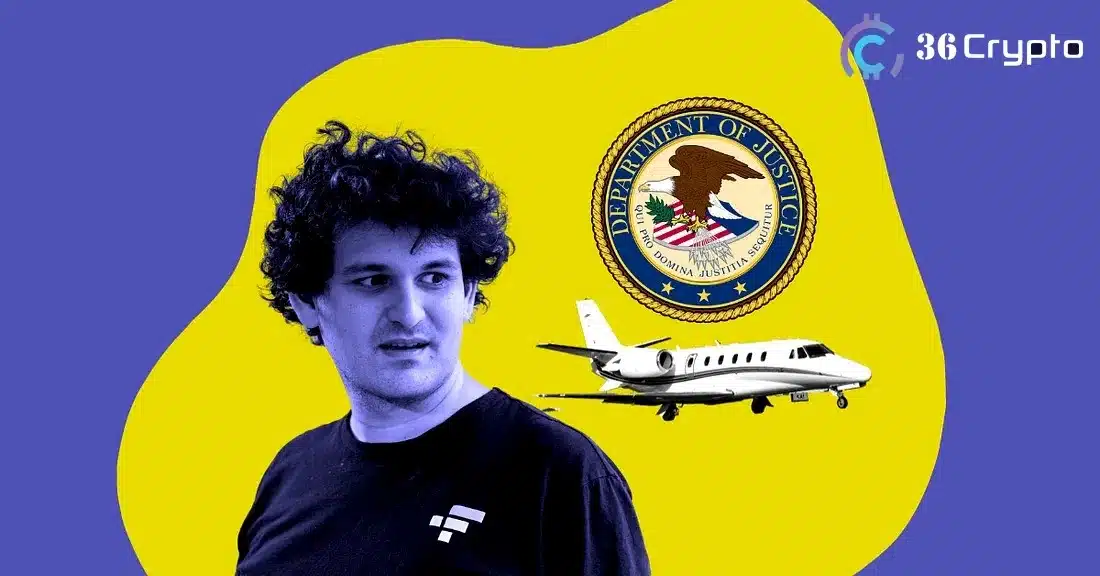It’s been ten months since the arrest of Sam Bankman-Fried. During this time, the prosecution has received guilty pleas from Caroline Allison (CEO of Alameda Research), Gary Wang (co-founder of FTX and Alameda Research), and Nishad Singh (CTO of FTX).
Three days have passed since the start of the trial, and we’re still munching on popcorn. Those closely following the proceedings are wondering if our main man, SBF, played some sort of sleight of hand with FTX customer funds, transferring them to Alameda Research for personal financial gain. The defense has chattered, portraying SBF as a kind of startup hero, building (and possibly breaking) his crypto plane while in flight.
According to the defense, SBF acted in good faith, and it’s not a crime to “be the CEO of a company that later files for bankruptcy.” Working in a startup is like “building a plane while you’re flying it,” the defense argued.
Witness Testimony
Allison and Singh have not yet appeared in court (expected in the coming days), but Wang testified against SBF on the third day.
In December 2022, Wang told the court, “I was tasked with making certain changes to the platform’s code, and I agreed. I made these changes, which I knew would give Alameda Research special privileges on the FTX platform.”
Yesterday, Wang stated in court, “We allowed Alameda to withdraw an unlimited amount of funds… [SBF] talked to the media, lobbied, talked to investors. I just programmed […], in the end, it was Sam’s decision [regarding any disputes].”
On the second day of the SBF trial
According to Inner City Press, 18 jurors, comprising 12 primary jurors and 6 alternates, were selected from a pool of 50 potential candidates on October 4th. “This is a big day for our boys,” said Martin Shkreli, live-streaming his trip to the SBF trial in Lower Manhattan, just as Judge Kaplan completed the jury selection around 11:30 Eastern Time.
SBF Courthouse visit https://t.co/3trvX1idp0
— Martin Shkreli (e/acc) (@wagieeacc) October 4, 2023
Shkreli once told Terraform founder Do Kwon, “Prison isn’t all that bad,” in a podcast a few hours before the FTX crash on November 11, 2022. At the moment, Kwon is evading justice and is being sought by US authorities.
US prosecutor Damian Williams from the Southern District of New York (SDNY) was spotted in the front row of the gallery just before the opening statements began at the Daniel Patrick Moynihan Courthouse in Lower Manhattan.
Judge Kaplan compared the courtroom photos to movie trailers shortly before the opening statement by Assistant US Attorney Thane Rhen in a case that some refer to as the largest cryptocurrency fraud case in America.
Prosecutors believe that SBF is guilty
“He had wealth, he had power, he had influence. But all of it was built on lies,” tells Thane Rhen, adding that SBF bolstered his facade by engaging with D.C. politicians while simultaneously trying to shut the door on those he considered rivals.
The founder of FTX falsified financial reports and lobbied politicians to keep attracting both users and investors, all while privately acknowledging his dire financial situation to his trusted aide, Rhen added.
The government attorney referred to one of Sam’s tweets where he said,“ FTX is fine. Assets are fine,” calling it a lie that confirmed Bankman-Fried’s intention to keep his cash cow appealing to the public until the wheels fell off.
It’s only been one week since SBF’s notorious “FTX is fine. Assets are fine.” pic.twitter.com/zKoILqquHF
— Robert Smith (@BondHack) November 14, 2022
“The only verdict is: Sam Bankman-Fried is guilty,” stated Rhen, concluding the government’s opening statement in the SBF case.
Attorney Cohen pointed to SBF’s past on Wall Street, his mathematical knowledge, and his portrayal as a “cartoon villain” created by prosecutors. He insisted that Alameda’s loans from FTX were transparent and compliant with the rules.
“Alameda took significant margin loans from FTX. There is nothing wrong with that,” Cohen argued.
Cohen also highlighted Ellison’s alleged failure to implement hedging strategies recommended by SBF and the belief that Sam had reasons to believe that Alameda was no longer accepting deposits on behalf of FTX at institutions like Silvergate Bank.
According to the defense, the staggering growth of FTX and the intertwined relationship with Alameda were the blows that broke the horses’ backs in 2022 when U.S. stocks plummeted, and Bitcoin crashed by 70%.
It is believed that Caroline Ellison, Gary Vana, and Nishad Singh, having pleaded guilty, will play a significant role in the trial as they will provide testimony in favor of the government. All three have extensive knowledge of FTX/Alameda transactions. Sam Trabucco, one of the CEOs of FTX, was not mentioned by either the prosecutors or the defense attorneys.
Cohen stated that after the trial, the jury will be offered the opportunity to acquit Bankman-Fried. With that, the defense attorney concluded his opening statement and left the proceedings.
On the 3rd day of the SBF trial
5th of October, Adam Yedidia, a friend of Sam Bankman-Fried, provided testimony that added spice to SBF’s trial. Adam shared firsthand accounts of living in a $35 million apartment, purportedly purchased with mixed client cash from FTX. He also mixed in some rumors from the Bahamas, hinting at secret conversations and dealings with Signal (which is also shielded from prosecution based on his testimony).
“Building a Plane While You’re Flying It”
Two planes purchased by Sam Bankman-Fried (SBF) through FTX are subject to confiscation. This was reported by the United States Department of Justice. These planes are the Bombardier Global and Embraer Legacy. Lawyers believe they were acquired with fraudulently obtained funds. FTX stated that the credits used to purchase them were not documented.
US v. SBF WITNESSES 1& 2: In Bankman-Fried Trial, Adam Yedidia Testifies With Immunity About Condo in Bahamas After French DOGE-Trading Victim- story: https://t.co/sSJOUfHO7I – and now, a forfeiture notice for Bombardier Global 5000 & Embraer Legacy EMB Aircraft pic.twitter.com/p6mmcRFXib
— Inner City Press (@innercitypress) October 5, 2023
“Originally, Embraer was bought for $12.5 million, and Bombardier for $15.9 million using financing provided by FTX,” according to a court document.
Furthermore, the statement notes that the possibility of confiscation arose due to “crimes described in counts one through four and seven of the indictment” filed against SBF.
Alameda’s Special Privilege, a $35 million “Residential Project” in the Bahamas

FTX $35m Bahamas Condo | Source: InnerCityPress
Yedidia’s Insights
Adam Yedidia, responding to Assistant U.S. Attorney (AUSA) Daniel Sasson’s personal questions, quickly identified FTX co-founder and CTO Gary Wang from a photograph.
- Gary Wang is the CTO at FTX and Alameda Research, a cryptocurrency hedge fund by SBF.
- Yedidia appointed Ryan Salame as the head of FTX’s settlement department. Salame confessed, but for some reason, cannot testify in favor of the prosecution, as previously reported by crypto.news.

FTX $35m Bahamas Condo | Source: InnerCityPress
Yedidia reiterated comments about FTX’s business model supported by the first witness, Marc-Antoine Julliar (a victim of FTX), who also believed that the exchange earned money from transaction fees rather than asset lending.
Ultimately, FTX moved over 10 employees, including Yedidia, Sam, Caroline Allison, Gary Wang, and Nishad Singh, to a $35 million apartment in New Albany, Bahamas, according to the sworn testimony.
Revelations and Departure
Prosecutors argued that Alameda, fully controlled by Sam Bankman-Fried (SBF), independently of the company’s hierarchy, paid for this offshore apartment using deposits from FTX clients.
On the 4th of October, attorney Mark Cohen made a statement, saying it was done to attract the “best and brightest,” adding that the credits were authorized and open.
Yedidia also voiced concerns regarding the management of risk and interpersonal relationships within the company, especially in light of SBF’s disclosure of personal relationships with Allison, the former CEO of Alameda. According to Yedidia’s account on the third day, there were suspicions among several employees that Alameda was funding certain expenses, but not with funds originating from FTX clients.
- At some point, Yedidia came across a coding error within FTX’s database that was used to track paper deposits sent through the North Dimension’s account at the beleaguered Silvergate Bank. According to his recollection, Yedidia became aware of this issue either from Gary or Nishad. Essentially, this coding error worked to the advantage of Alameda, allowing them to utilize FTX customer assets with very few restrictions. At one stage, Alameda had incurred a debt of $500 million.
6 months after Sam approved the rectification of this anomaly, the shortfall had escalated to$8 billion, as Nishad reportedly confessed to Yedidia. Yedidia attempted to address this issue with SBF, who assured him that everything was in order and suggested they communicate through Signal, a messaging platform known for its automatic message deletion.
- SBF subsequently instructed the company’s employees to utilize Signal and its auto-delete feature as a precaution in case regulators initiated monitoring efforts. It was evident that Sam was ahead of the curve in anticipating potential challenges. In their next conversation, according to Yedidia, SBF was actively involved in building relations with the United Arab Emirates and Saudi Arabia, an effort that took place around July, just a few months before FTX ceased withdrawals and declared bankruptcy in November 2022.
“I told Sam I wouldn’t go anywhere… Then I quit. What changed? I found out that Alameda used client deposits to pay off its loans. This seemed outrageously wrong,” commented Adam Yedidia, a former FTX developer, in response to AUSA Sasson on his departure from FTX.
Gary Wang’s Testimony in the SBF Trial
Asked by the prosecutors, “Did you commit crimes on FTX?” Wang replied:
“Yes. With Nishad Singh, Caroline Allison, and Sam Bankman-Fried… we allowed Alameda to withdraw an unlimited amount of funds.”
Gary Wang, co-founder and CTO of FTX, admitted to fraud under oath in the trial of SBF. Wang stated that SBF named the company after its location in Alameda County. According to the FTX co-founder, Sam’s guidance included simplifying the process of opening a bank account.
Wang owned 10% of the company, while Bankman-Fried controlled 90% of the Alameda cryptocurrency hedge fund. Thus, according to Wang’s testimony, the final say in everything rested with Sam.
The same was true for FTX. Sam had veto power, and everyone answered to him. Wang also revealed that Bankman-Fried acted as the public face of the company, engaging in lobbying, media interviews, and connections with both retail and institutional investors.
“I just coded,” said the former Google employee, adding that he received a salary of $200,000 and owned 17% of FTX shares, which briefly made him a billionaire. Alameda Research enjoyed special privileges embedded in the FTX platform, Wang told prosecutors in court.
The hearing was adjourned until October 6th. Prosecutors expect a verdict in the U.S. case against Sam Bankman-Fried in four to six weeks, but AUSA stated that the trial is behind schedule and may be prolonged.
The judge, who issued a dozen “overruled” decisions on the third day, urged the defense to conduct cross-examinations more expeditiously for the benefit of the jurors and then left the bench.
Conclusion
The cryptocurrency community continues to hold its breath, closely monitoring the ongoing legal proceedings involving Sam Bankman-Fried. With key players already having admitted guilt, the focus now shifts to SBF himself. As the legal process unfolds, the cryptocurrency community is stocking up on popcorn and eagerly awaiting the verdict.
Read More:

